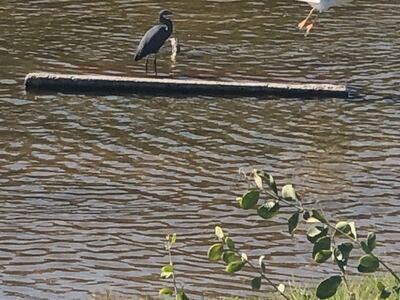Cyclone Shaheen levelled properties and sent people in Oman running for shelter, but the destructive storm has left a pleasant surprise in its aftermath.
Nature enthusiasts are delighting in the arrival of birds that do not usually visit the country.
Swathes of land that are usually empty are now filled with water, which has attracted different species to the parts of Oman most affected by the cyclone.
Birdwatchers say white cranes, ospreys, geese and flamingos are paddling in the waters.
“The empty arid lands are now rivers and lakes, thanks to the recent floods,” Shahid Maktoob, a nature enthusiast in Suwaiq, told The National. “We see an unusual landing of different species of birds in our area which we don’t normally see at any time on the water left behind by the storms.”
Peter Basset, 74, a birdwatcher for 52 years in the UK’s Lake District and now retired in Oman, said migratory birds which usually fly past Oman from Iran to escape cold weather to India have stopped off in the Batinah region this time.
“This time of the year, these birds fly away from Iran as the temperature there gets colder to warmer climates in India. But this time, because of the pools of water left behind by the storms, they made landfall in the Batinah areas,” Mr Basset told The National.

Most damage was caused in Oman's Batinah region, in the towns of Al Musannah, Suwaiq, Saham, Khabourah and Sohar, which were hit by 60-knot winds and 12-metre waves.
“I have spotted white cranes, geese and even flamingos on my usual evening walks in these flooded areas,” Hashim Al Saleh, a birdwatcher from Saham, told The National.
“It is not usual we see these kinds of birds flying around at any time here in Batinah. The floods devastated our houses but brought beautiful birds as well.”
Faisal Al Moosa, another birdwatcher, said he usually spots hawks, eagles and vultures in the deserts of Oman.
“There are predator birds and they stay in the desert looking for foxes, rabbits and rats to eat. But this time, we have different foreign birds and that is really something special for birdwatchers like us,” he said.

More than 5,000 people affected by the floods were moved to temporary accommodation, but most have now returned to their homes.
The storms killed 12 people in Oman and two fishermen in Iran.
Thousands of volunteers are helping to restore towns devastated by the storm. The government has said it will build 328 houses for families whose homes were destroyed by the floods.





